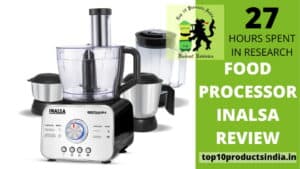Sauerkraut, thanks to the wonders of lacto fermentation, is quite the resilient condiment. Well, the question here is, does it go bad if you don’t refrigerate it? Well, an opened sauerkraut can very well sit at room temperature without showing any signs of spoilage because it is acidic in nature and it keeps harmful bacteria away.
Unopened jars: They can be stored conveniently at room temperature.
After opening: Well, you need to refrigerate them to maintain safety and quality.
The bottom line is to keep unopened shear cuts in the pantry. However, if you open it, it is best to store it in the refrigerator straight away.
Shelf Stability: Understanding Sauerkraut’s Resilience
The shear part has a nice tangy crunch, which many of us love, and it has the power of lacto fermentation. This is a process where good bacteria make a cozy home in the cabbage.
This keeps the spoilage squad away. This is a very old preservation method, and this actually gives sauerkraut a great shelf life. If you have opened it, just store it in a cool, dry place, and it can hang there tight for months to come or even, let’s say, one year or so.
The magic is in the fermentation. It creates an environment that is less inviting for harmful microbes. So the sauerkraut remains safe to consume for a pretty long period of time.
The Refrigeration Dilemma: To Chill or Not to Chill
After opening, the best trend of sauerkraut is actually the refrigerator. Why? Now, as it is acidic and salty in nature, it does slow down bacterial growth. But when we add the right temperature factor to it, its freshness can be extended to a great level. Unopened sauerkraut, as I said, is okay to be stored at room temperature. Thanks to the fermentation process.
- Post opening: Refrigeration is always recommended if you really don’t want to disturb the taste of sauerkraut.
- Room temperature resilience: Unopened sauerkraut is okay at room temperature. Thanks to fermentation.
- Flavor preservation: If you’re not keeping it inside the refrigerator after opening it, you might lose the taste and flavor for sure.
Spotting Spoilage: Signs Your Sauerkraut Has Gone Bad
- Off smell: Well, I personally don’t appreciate such sauerkraut, but I can very easily figure out whether it is spoiled or not just by smelling it. It’s easy
- Mold appearance: You will be able to see mold formation or some sort of discoloration that indicates that your sauerkraut has gone wild.
- Texture changes: The very easy way to figure out whether your shortcut is okay or not is to check the texture. It will lose its crunch if it is not good to be eaten.
- Taste test: Just a bit of taste can also explain a lot about the freshness of sauerkraut. Even if you feel a slight doubt, just throw it away.
Optimal Storage Solutions for Sauerkraut
- Cool, dark place: No matter if you have opened or unopened it, make sure to store it in a cool and dark place away from direct sunlight.
- Air-tight containers: If you are tightening the container lid to its best, there are hardly any chances for bacteria to penetrate inside, especially if you have stored it in the refrigerator.
- Refrigeration: Yes, the main job of the refrigerator is to slow down the fermentation process, and that way, it prevents spoilage.
- Avoid cross-contamination: You can use clean utensils to prevent bacteria from introducing into the jar.
Temperature Talk: How Heat Affects Your Kraut
- Heat accelerates fermentation: Now that’s a thumb rule about which the whole world knows. Warm temperatures add extra gear to the fermentation process, which leads to soaring tests and quick spoilage.
- Bacterial growth: Heat obviously helps bacteria grow at a greater pace, which again hampers the quality of your clot.
- Refrigeration recommended: Especially after opening, you need to refrigerate your sure clot to maintain its ideal tanginess.
The Long Life of Lacto-Fermentation: What Keeps Sauerkraut Fresh
Lacto fermentation plays a definite role in the longevity of sauerkraut.
This process doesn’t just preserve the cabbage by creating an acidic environment but also adds an extra start to its nutritional value. When cabbage undergoes fermentation, lactobacillus bacteria convert sugar into lactic acid, which is a natural phenomenon that prevents harmful bacteria from growing.
So your sauerkraut remains good to eat for a pretty long time, and all vital probiotics and vitamins are preserved for a long. You will be able to see flavor ups and downs with time which offers your sauerkraut a complex taste profile.
I personally enjoy it. Yes, sauerkraut has got a tremendous shelf life, and you can add it to various dishes while keeping its nutritional value and freshness intact.
Common Myths Debunked: Sauerkraut Storage Facts
Yes, there are a few myths associated with the storage of sauerkraut. A few say that after fermentation, it doesn’t need any sort of careful storage. Well, the reality is something else. Yes, it does have a good shelf life, but keep in mind proper storage is the key to maintaining its top quality.
Another misconception is entirely different from this. A few say that the sauerkraut is always supposed to be refrigerated. Well, it’s not like that. If it is unopened and you are not forced to keep it inside a refrigerator, you can store it on your kitchen shelf. Nothing will happen to it, don’t worry.
One more myth is that if you are mixing the open sauerkraut with something else, let’s say sauce or something like that, then you can keep it at room temperature without getting it spoiled.
Well, when I talk about mixing stuff, I cannot be sure, but let’s talk about the common sense of each and every food item that is similar to sauerkraut, or let’s say their sauces, gets spoiled by the same scientific phenomenon, which is bacterial growth. Warm temperature and moisture are the biggest helpers of bacteria.
So, I don’t feel it’s that tough to figure out whether it’s a myth or a reality. Obviously, it’s a myth.












